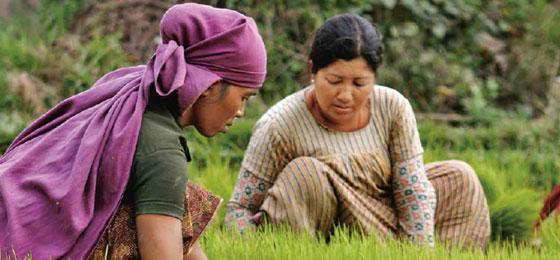Winning a race against time

What is the best way to treat neurotoxic snake bites? François Chappuis, the head of the Division of Tropical and Humanitarian Medicine of the University Hospitals of Geneva, has been supervising the first clinical randomised tests in Nepal. By Catherine Riva
"Since 1998 we have maintained a cooperation agreement with a university hospital in South-East Nepal, the B.P. Koirala Institute of Health Science. This collaboration has included clinical and epidemiological research on neglected tropical diseases, such as snake bites. In the south of Nepal there are two separate snake species with neurotoxic poisons, the cobra and the banded krait. A bite from either leads to progressive paralysis, resulting in respiratory failure and eventually death. The banded krait is a nocturnal biter, attacking those asleep on the ground. As its bite is often almost painless, the victims sometimes don’t even wake up but die in their sleep. The cobra, on the other hand, bites by day, and often chooses its victims amongst farmworkers. In both cases, treatment is a race against time: it takes just one hour from the time of the bite for the first symptoms to appear. It is therefore critical to ensure that the patient is taken into charge within that time period.
Our first study looked at the implementation of a network of volunteers staffing a 24/7 stand-by service for transporting bite victims by motorcycle to a treatment centre. This programme has led to a spectacular drop in mortality.
Our most recent study looked at improving the diagnosis and management of bite victims once at the treatment centre. We also compared two different doses of anti-venoms. The first is the anti-venom dose recommended in Nepal. This procedure involves administrating a small initial dose, then a drip dose over the following hours and days. The second method, which is recommended by WHO on the basis of expert opinions, prescribes an anti-venom dose five times greater than that used in Nepal. This study was the first controlled, randomised study that has looked at the two different dosages.
Our sample included just over 150 patients treated at three centres. It was a huge challenge to ensure a double-blind study. At each centre, a nurse had to prepare the doses in such a way that neither the patients nor the prescribing doctor could identify which treatment was being given. All of the patients were therefore drip-fed a solute. In the case of the Nepalese procedure, this contained the anti-venom, but in the other, it didn’t.
One other difficulty that we had to overcome was that the medical research assistants were all waiting for places on postgraduate training courses in Nepal. Some of them were offered places and left the study to take them. At that point we therefore had to take on other doctors and train them too.
We were also concerned about offering the best possible care throughout the study and about making sure that what we learnt would be of use in the future. In the case of the banded krait, mortality had been at more than 30% prior to the study. During the test period, we reduced this to 6%, because we trained researchers to use respiratory resuscitation (intubation and ventilation).
The results did not show any differences between the two dosages. Nevertheless, we recommend the stronger dose. It is more practical, particularly when practitioners are not doctors and are working in rural areas. With the cobra bite, neurotoxicity symptoms clear up much more quickly. This is not the case with the banded krait. We even reached the point where we, like others, even asked ourselves if the anti-venom had the slightest effect.
Luckily, with these bites, the stronger dose of anti-venom is not more toxic, but the lack of effectiveness does underline the importance of having staff trained in resuscitation and ventilation.
In the first three months of 2015, we will hold a workshop with representatives of the Health Ministry of Nepal as well as with other stakeholders to review the procedures for managing snake bite victims in the country in the light of the results of our study".
Interview by Catherine Riva, freelance journalist and translator(From "Horizons" no. 103, December 2014)